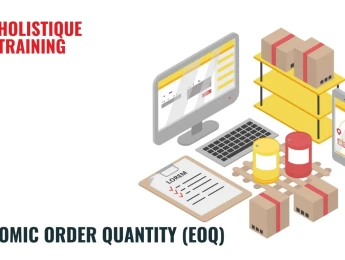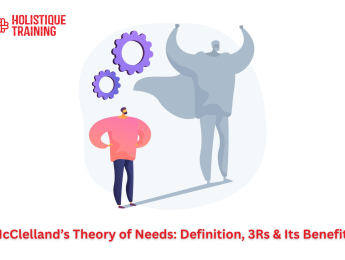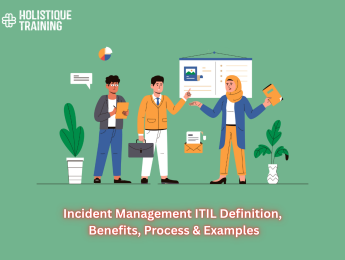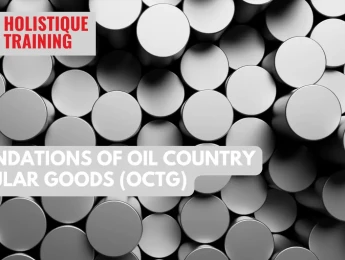- Table of Contents
- Introduction
- What Is Economic Order Quantity (EOQ)?
- When Is EOQ High & When Is It Low?
- Calculating Economic Order Quantity
- EOQ Formula
- Factors that Affect EOQ
- Reorder Point
- Purchase Order Lead Time
- Purchasing Cost per Unit
- Stockouts
- Quality Costs
- Demand
- Seasonal Variations
- Supplier Reliability
- Inventory Holding Costs
- Benefits of Using EOQ
- Cost Efficiency
- Optimised Inventory Levels
- Improved Cash Flow
- Enhanced Decision Making
- Reduced Storage Costs
- Decreased Risk of Obsolescence
- Streamlined Supply Chain Operations
- Better Supplier Relationships
- Enhanced Customer Satisfaction
- Facilitated Scalability
- Example of How to Use EOQ
- The deviationLimitations and Challenges of the EOQ Model
- Assumption of Constant Demand
- Assumption of Constant Lead Time
- Neglect of Quantity Discounts
- Simplified Cost Assumptions
- Difficulty in Accurate Data Collection
- Fixed Order Costs Assumption
- Inventory Holding Cost Variability
- Lack of Flexibility for Multiple Products
- Inapplicability to Perishable Goods
- Exclusion of Service Level Considerations
- Factors Other Than EOQ That Help With Inventory Management
- Reorder Points
- Safety Stock Measurements
- Real-Time Inventory Tracking
- Demand Forecasting
- Supplier Relationships
- Conclusion
Introduction
Efficient inventory management is critical for any business to balance supply and demand while minimising costs. One pivotal concept in achieving this balance is the Economic Order Quantity (EOQ). By leveraging EOQ, businesses can determine the optimal order size that minimises total inventory costs. This blog post will delve into the intricacies of EOQ, from its definition and calculation to its benefits, limitations, and supplementary factors that enhance inventory management.
What Is Economic Order Quantity (EOQ)?
Economic Order Quantity (EOQ) is a fundamental inventory management tool that helps determine the most cost-effective quantity of stock to order. The primary goal of EOQ is to minimise the total cost associated with inventory, which includes ordering costs, holding costs, and stockout costs.
EOQ's relevance to inventory management lies in its ability to determine the optimal order size precisely. This figure helps businesses balance the costs of ordering too frequently and the costs of holding too much inventory. When EOQ is applied correctly, it ensures that inventory levels are neither excessively high nor dangerously low, thereby optimising operational efficiency.
When Is EOQ High & When Is It Low?
EOQ can vary significantly based on several factors. A higher EOQ typically indicates that the cost of placing an order is high or the demand for the product is substantial. Conversely, a lower EOQ suggests that holding costs are high or that the ordering process is inexpensive and can be done frequently.
Calculating Economic Order Quantity
To calculate EOQ, certain key variables must be obtained from the inventory management system:
- Demand (D): The total quantity of units required over a specific period.
- Ordering Cost (S): The cost incurred each time an order is placed, regardless of the order quantity.
- Holding Cost (H): The cost to hold a single inventory unit for a specified period.
EOQ Formula
The EOQ formula is given by:
EOQ=2DSH
Where:
- D is the annual demand,
- S is the ordering cost per order,
- H is the holding cost per unit per year.
Factors that Affect EOQ
Economic Order Quantity (EOQ) is influenced by various factors that can significantly impact the accuracy and effectiveness of the model. Understanding these factors is essential for businesses to adjust their strategies and optimise inventory management.
Reorder Point
The reorder point is the inventory level at which a new order should be placed to replenish stock before it runs out. It is calculated based on the lead time demand, which is the amount of inventory used during the lead time. The reorder point ensures enough inventory to meet customer demand while waiting for the next order to arrive.
Reorder Point= Lead Time Demand + Safety Stock
For example, if a company sells 100 units per day and the lead time is 5 days, the lead time demand would be 500 units. If the company keeps a safety stock of 200 units to account for variability in demand, the reorder point would be 700 units.
The reorder point directly affects EOQ because it determines when orders are placed. If the reorder point is set too high, it may lead to excessive inventory holding costs. Conversely, if it is set too low, it may result in stockouts.
Purchase Order Lead Time
Lead time is the duration between placing an order and receiving the stock. This period includes the time the supplier takes to process the order, manufacture or prepare the items, and ship them to the company. Longer lead times require businesses to hold more inventory to cover the demand during the waiting period.
Lead time variability can also impact EOQ. If the lead time is unpredictable, companies may need to hold additional safety stock to buffer against delays, increasing holding costs. Conversely, reliable and short lead times allow businesses to reduce inventory levels and lower holding costs.
Purchasing Cost per Unit
The purchasing cost per unit is the price paid for each item purchased. This cost can influence EOQ in several ways:
- Bulk Discounts: Suppliers often offer discounts for larger order quantities. While ordering in bulk can reduce the purchasing cost per unit, it also increases holding costs. EOQ helps balance these costs to determine the optimal order size.
- Price Fluctuations: If the cost per unit fluctuates, the total cost calculations in the EOQ model can be impacted. Businesses need to monitor price trends and adjust their order quantities accordingly.
Stockouts
Stockouts occur when the inventory level is insufficient to meet customer demand. This can lead to missed sales opportunities, customer dissatisfaction, and potential loss of market share. EOQ helps mitigate the risk of stockouts by determining the optimal order size and timing.
To further reduce stockout risks, businesses can implement safety stock—a buffer of extra inventory to cover unexpected demand spikes or supply chain disruptions. However, holding safety stock increases carrying costs, which must be balanced against stockout risk.
Quality Costs
Quality costs include the costs associated with ensuring products meet quality standards and the costs of dealing with defective items. These costs can impact EOQ in several ways:
- Inspection and Testing Costs: If quality control requires extensive inspection and testing, the holding costs may increase, affecting the EOQ.
- Defective Items: Handling defective items can lead to additional costs such as returns, replacements, and lost sales. High defect rates may necessitate larger order quantities to compensate for unusable inventory, impacting EOQ.
Demand
Demand is a critical factor in calculating EOQ. It represents the quantity of a product that customers will purchase over a specific period. Seasonality, market trends, economic conditions, and marketing efforts can influence demand.
- Stable Demand: If demand is relatively stable and predictable, calculating EOQ becomes straightforward.
- Variable Demand: Fluctuating demand requires more sophisticated demand forecasting and may necessitate adjustments to EOQ to avoid overstocking or stockouts.
Accurate demand forecasting is crucial for determining the correct EOQ. Inaccurate forecasts can lead to either excessive inventory holding costs or frequent stockouts.
Seasonal Variations
Many businesses experience seasonal fluctuations in demand. For example, retail companies may see increased demand during the holiday season, while other industries might have peak periods during specific times of the year. Seasonal variations require adjustments to EOQ to ensure that inventory levels are sufficient to meet peak demand without resulting in excessive overstock during slower periods.
Businesses need to analyse historical sales data and identify seasonal trends to adjust their EOQ accurately. This ensures that they can respond effectively to changes in demand and avoid the pitfalls of overstocking or stockouts.
Supplier Reliability
Supplier reliability plays a significant role in determining EOQ. Reliable suppliers with consistent lead times and high-quality products allow businesses to maintain lower inventory levels. In contrast, unreliable suppliers with frequent delays or quality issues may require businesses to hold higher safety stock levels to buffer against these uncertainties, affecting the EOQ.
Building strong relationships with reliable suppliers and diversifying the supplier base can help mitigate risks and optimise inventory management. Businesses should regularly evaluate supplier performance and adjust their EOQ calculations accordingly.
Inventory Holding Costs
Holding costs, or carrying costs, are the expenses associated with storing and maintaining inventory. These costs include warehousing expenses, insurance, depreciation, and the opportunity cost of capital tied up in inventory. High holding costs can significantly impact EOQ by increasing the total cost of maintaining inventory.
Businesses need to analyse and control holding costs to optimise EOQ. Strategies such as improving warehouse efficiency, implementing inventory management software, and negotiating better terms with storage providers can help reduce holding costs and achieve more accurate EOQ calculations.
Understanding the factors that affect Economic Order Quantity (EOQ) is essential for businesses to optimise their inventory management practices. By considering variables such as reorder points, lead times, purchasing costs, demand variability, and supplier reliability, companies can accurately calculate EOQ and balance inventory holding costs and ordering costs. This comprehensive approach to inventory management ensures that businesses can meet customer demand efficiently while minimising costs and maximising profitability.
Benefits of Using EOQ
Implementing the Economic Order Quantity (EOQ) model in inventory management offers numerous advantages. Businesses can significantly improve their operational efficiency and overall profitability by accurately calculating the optimal order quantity. Here are the key benefits of using EOQ:
Cost Efficiency
EOQ minimises the total cost associated with inventory management by balancing ordering costs and holding costs. This optimisation helps reduce unnecessary expenses and allocate resources more effectively. By calculating the most cost-effective order size, businesses can avoid the financial strain of excessive inventory and frequent ordering. In one case study it was shown that by using the EOQ method, one of Indonesia’s enterprises, PT. Wijaya Agung Hutama minimised its inventory cost by 88.21% in 2020 and is projected to reduce it by 81.66% in 2021. This demonstrates the significant cost-saving potential of the EOQ method in inventory control for small and medium enterprises.
Optimised Inventory Levels
EOQ helps maintain optimal inventory levels, ensuring businesses have enough stock to meet customer demand without overstocking. This balance prevents the issues associated with excess inventory, such as storage costs, obsolescence, and wastage. At the same time, it mitigates the risk of stockouts, which can lead to lost sales and customer dissatisfaction.
Improved Cash Flow
Effective inventory management through EOQ improves cash flow by reducing the amount of capital tied up in inventory. With a better understanding of the optimal order quantity, businesses can make more informed purchasing decisions, freeing up cash for other critical operations or investments. This financial flexibility is vital for maintaining liquidity and supporting growth initiatives.
Enhanced Decision Making
EOQ provides a data-driven approach to inventory management, enabling businesses to make more informed and strategic decisions. By leveraging accurate calculations and considering various factors that affect inventory costs, companies can develop more effective inventory policies and practices. This analytical approach reduces the reliance on guesswork and intuition, leading to more reliable and consistent outcomes.
Reduced Storage Costs
By determining the optimal order quantity, EOQ helps minimise storage costs. Excessive inventory requires additional storage space, which can be costly. EOQ ensures that businesses only hold the necessary amount of stock, reducing the need for extensive warehousing and the associated expenses. This cost reduction contributes to overall operational efficiency and profitability.
Decreased Risk of Obsolescence
Holding too much inventory increases the risk of products becoming obsolete or expiring before they can be sold. EOQ helps mitigate this risk by optimising order quantities and ensuring that inventory turnover remains at a healthy rate. By maintaining lower inventory levels, businesses can reduce the likelihood of having to write off obsolete stock, thereby protecting their bottom line.
Streamlined Supply Chain Operations
EOQ contributes to smoother supply chain operations by providing a clear framework for inventory replenishment. By knowing the optimal order quantity and timing, businesses can coordinate more effectively with suppliers and logistics providers. This synchronisation helps prevent disruptions, improve lead times, and enhance overall supply chain performance.
Better Supplier Relationships
Implementing EOQ can improve relationships with suppliers. Businesses can establish a more predictable and reliable ordering pattern by consistently ordering the optimal quantity. This reliability fosters trust and collaboration with suppliers, potentially leading to better pricing, priority service, and more favourable terms. Strong supplier relationships are crucial for maintaining a resilient and responsive supply chain.
Enhanced Customer Satisfaction
Maintaining optimal inventory levels through EOQ ensures businesses can promptly and efficiently meet customer demand. This reliability enhances customer satisfaction by reducing the likelihood of stockouts and backorders. Satisfied customers are more likely to become repeat buyers and brand advocates, contributing to long-term business success.
Facilitated Scalability
As businesses grow, their inventory management needs become more complex. EOQ provides a scalable framework that can adapt to changing demand and operational requirements. By regularly recalculating EOQ based on updated data, businesses can ensure that their inventory practices remain efficient and effective as they expand. This scalability is essential for supporting sustainable growth and maintaining competitive advantage.
In short, Economic Order Quantity (EOQ) is a powerful tool that offers many benefits for businesses seeking to optimise their inventory management practices. EOQ provides a comprehensive framework for maintaining the right balance between ordering and holding inventory, from cost efficiency and improved cash flow to enhanced decision-making and customer satisfaction. By understanding and leveraging the advantages of EOQ, businesses can achieve greater operational efficiency, financial stability, and long-term success.
Example of How to Use EOQ
Consider a company, ABC Manufacturing, that produces widgets. The annual demand for widgets is 10,000 units, the cost of placing an order is $50, and the holding cost per unit per year is $2. Using the EOQ formula:
2DSH =210,000502 =500,000 = 707
Therefore, ABC Manufacturing should order 707 units each time to minimise their total inventory costs.
Metric | Description |
Inventory Holding Costs | Cost of holding inventory over a period. |
Ordering Costs | Expenses incurred each time an order is placed. |
Stockout Occurrences | Instances where demand exceeds available inventory. |
Lead Time Variability | Fluctuations in time from order placement to receipt. |
EOQ Variance from Actual Use | Deviation between calculated EOQ and actual usage. |
Table: Metrics to measure the effectiveness of the EOQ model
The deviationLimitations and Challenges of the EOQ Model
While the Economic Order Quantity (EOQ) model is a powerful tool for optimising inventory management, it has limitations and challenges. Understanding these constraints is crucial for businesses to make informed decisions and effectively integrate EOQ into their operations.
Assumption of Constant Demand
One of the primary limitations of the EOQ model is the assumption of constant demand. EOQ calculations are based on the premise that demand for a product remains steady over time. However, demand can fluctuate in reality due to seasonality, market trends, economic conditions, and other factors. This variability can lead to inaccuracies in EOQ calculations and suboptimal inventory levels.
Assumption of Constant Lead Time
The EOQ model also assumes that lead time—the period between placing and receiving an order—remains constant. In practice, however, lead times can vary due to supplier performance, transportation issues, and other disruptions. Variable lead times can result in stock-outs or excess inventory, undermining the effectiveness of the EOQ model.
Neglect of Quantity Discounts
Many suppliers offer quantity discounts for larger orders, which the basic EOQ model does not account for. These discounts can significantly impact the total inventory cost, making it more economical to order larger quantities than the EOQ suggests. Businesses must consider these discounts and potentially adjust their order quantities to maximise cost savings.
Simplified Cost Assumptions
The EOQ model relies on simplified inventory-related assumptions, including ordering and holding costs. However, these costs can be more complex and may include hidden expenses such as administrative fees, insurance, and depreciation. Oversimplifications can lead to less accurate EOQ calculations and suboptimal decision-making.
Difficulty in Accurate Data Collection
Accurate EOQ calculations depend on precise data regarding demand, lead times, ordering costs, and holding costs. Collecting and maintaining this data can be challenging, especially for businesses with diverse product lines and fluctuating demand patterns. Inaccurate or incomplete data can lead to erroneous EOQ calculations and ineffective inventory management.
Fixed Order Costs Assumption
The EOQ model assumes that the cost per order is fixed, regardless of the order size or frequency. However, in practice, ordering costs can vary based on the volume and complexity of the order. For example, larger orders might incur higher shipping costs or require more administrative work. This variability can affect the accuracy of EOQ calculations and the overall efficiency of inventory management.
Inventory Holding Cost Variability
The EOQ model assumes a constant inventory holding cost, which may not always be true. Holding costs can vary based on factors such as changes in storage costs, fluctuations in interest rates, or variations in insurance premiums. This variability can impact the total cost of inventory and the accuracy of EOQ calculations.
Lack of Flexibility for Multiple Products
The EOQ model can become cumbersome and less effective for businesses managing multiple products. Each product requires separate EOQ calculations, which can be time-consuming and complex. Additionally, coordinating orders for multiple products to achieve economies of scale can be challenging, particularly when demand patterns and lead times vary across products.
Inapplicability to Perishable Goods
The EOQ model is less suitable for managing perishable goods with limited shelf lives. For these products, holding costs include the risk of spoilage, which can significantly impact the optimal order quantity. Businesses dealing withperishable goods need to consider additional factors, such as expiration dates and spoilage rates, which the basic EOQ model does not address.
Exclusion of Service Level Considerations
The EOQ model focuses primarily on minimising costs and does not explicitly consider service level targets, such as the desired probability of avoiding stockouts. Businesses aiming to achieve specific service levels may need to adjust their inventory policies beyond the EOQ recommendations to ensure high customer satisfaction and avoid lost sales.
While the Economic Order Quantity (EOQ) model provides a robust framework for optimising inventory management, it is essential to recognise its limitations and challenges. By understanding the assumptions and constraints inherent in the EOQ model, businesses can make more informed decisions and develop complementary strategies to address these challenges. This holistic approach ensures that inventory management practices remain effective, responsive, and aligned with the dynamic nature of business operations.
Factors Other Than EOQ That Help With Inventory Management
To achieve comprehensiveinventory optimisation, businesses should consider other factors in addition to EOQ:
Reorder Points
Determining accurate reorder points ensures that new orders are placed at the right time to avoid stockouts and maintain optimal inventory levels.
Safety Stock Measurements
Safety stock acts as a buffer against demand variability and lead time fluctuations. Calculating appropriate safety stock levels helps prevent stockouts without excessive overstocking.
Real-Time Inventory Tracking
Implementing real-time inventory tracking systems provides up-to-date information on stock levels, enabling more responsive and accurate inventory management.
Demand Forecasting
Accurate demand forecasting allows businesses to anticipate future demand and adjust their inventory levels accordingly, reducing the risk of overstocking or understocking.
Supplier Relationships
Strong relationships with suppliers can lead to more reliable deliveries, better pricing, and improved lead times, all of which contribute to more efficient inventory management.
Conclusion
Economic Order Quantity (EOQ) is a crucial tool in inventory management that helps businesses minimise costs and optimise stock levels. By understanding and applying the EOQ model, companies can achieve significant cost savings and operational efficiencies. However, it is essential to consider its limitations and complement it with other inventory management strategies such as accurate reorder points, safety stock measurements, and real-time tracking. With a comprehensive approach, businesses can ensure their inventory management practices are robust, adaptive, and aligned with their operational goals.
To further enhance your knowledge and skills in inventory management, consider enrolling in our course "Strategic Inventory Management." This course offers in-depth insights and practical techniques to help you master inventory control and drive your business towards greater efficiency and profitability.
























